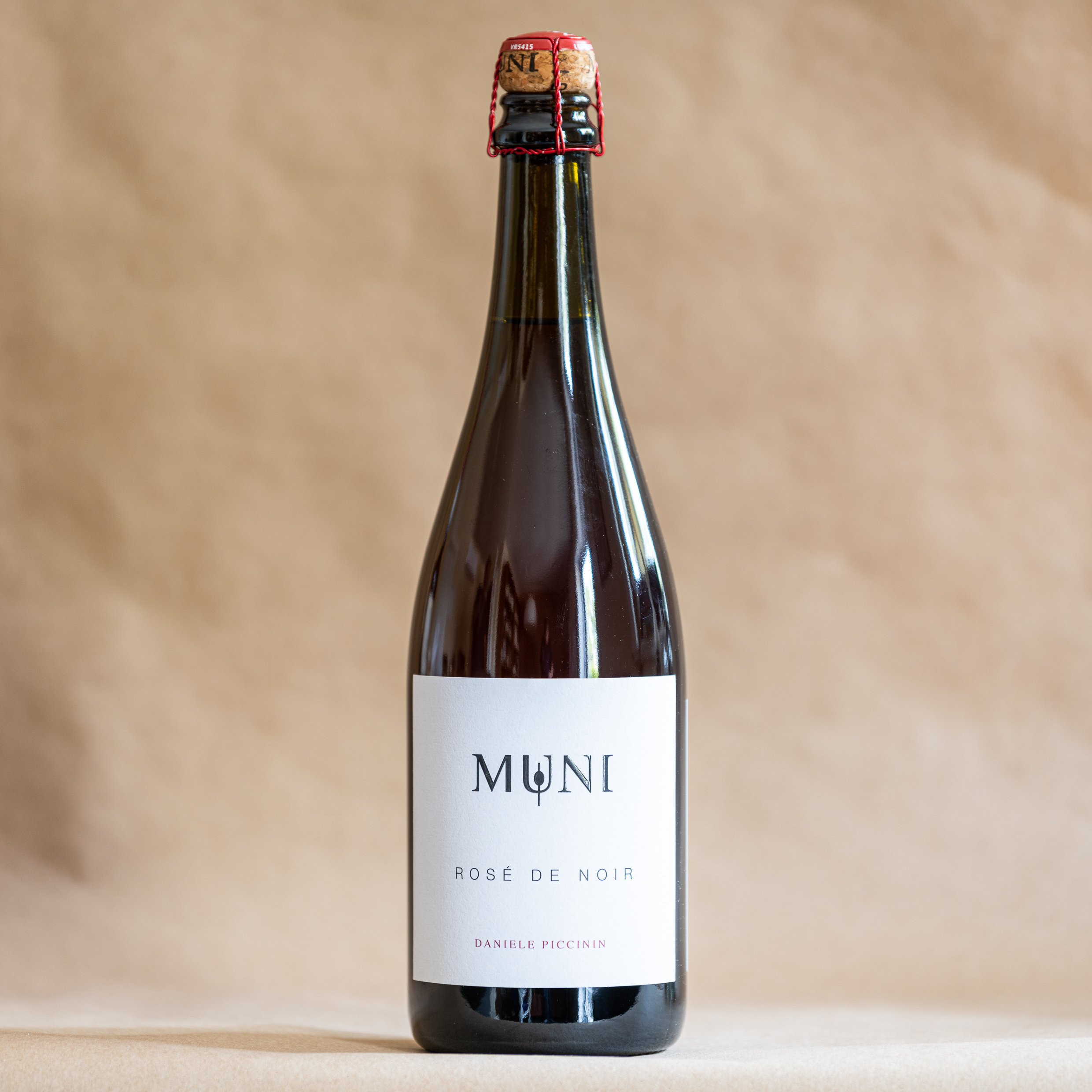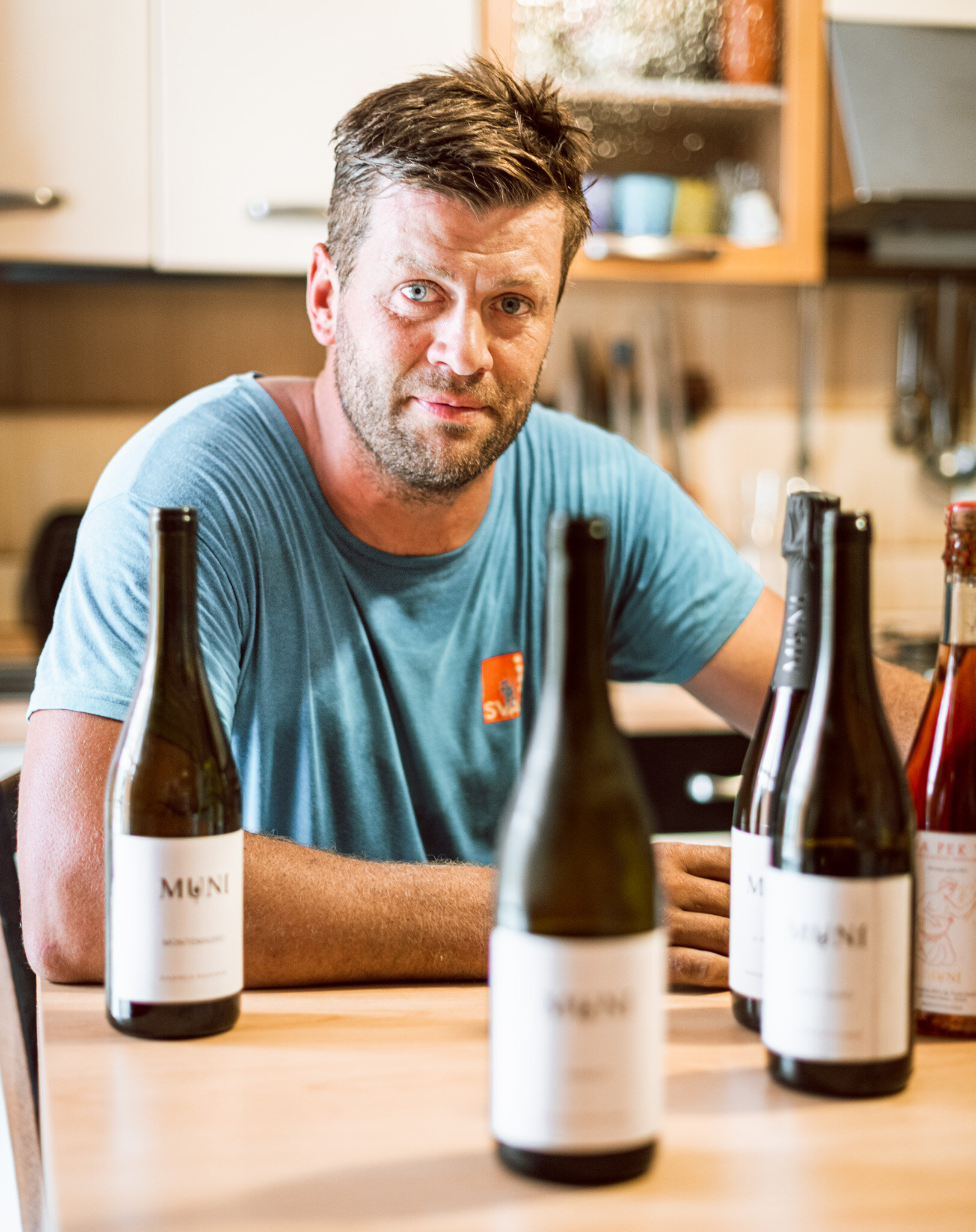

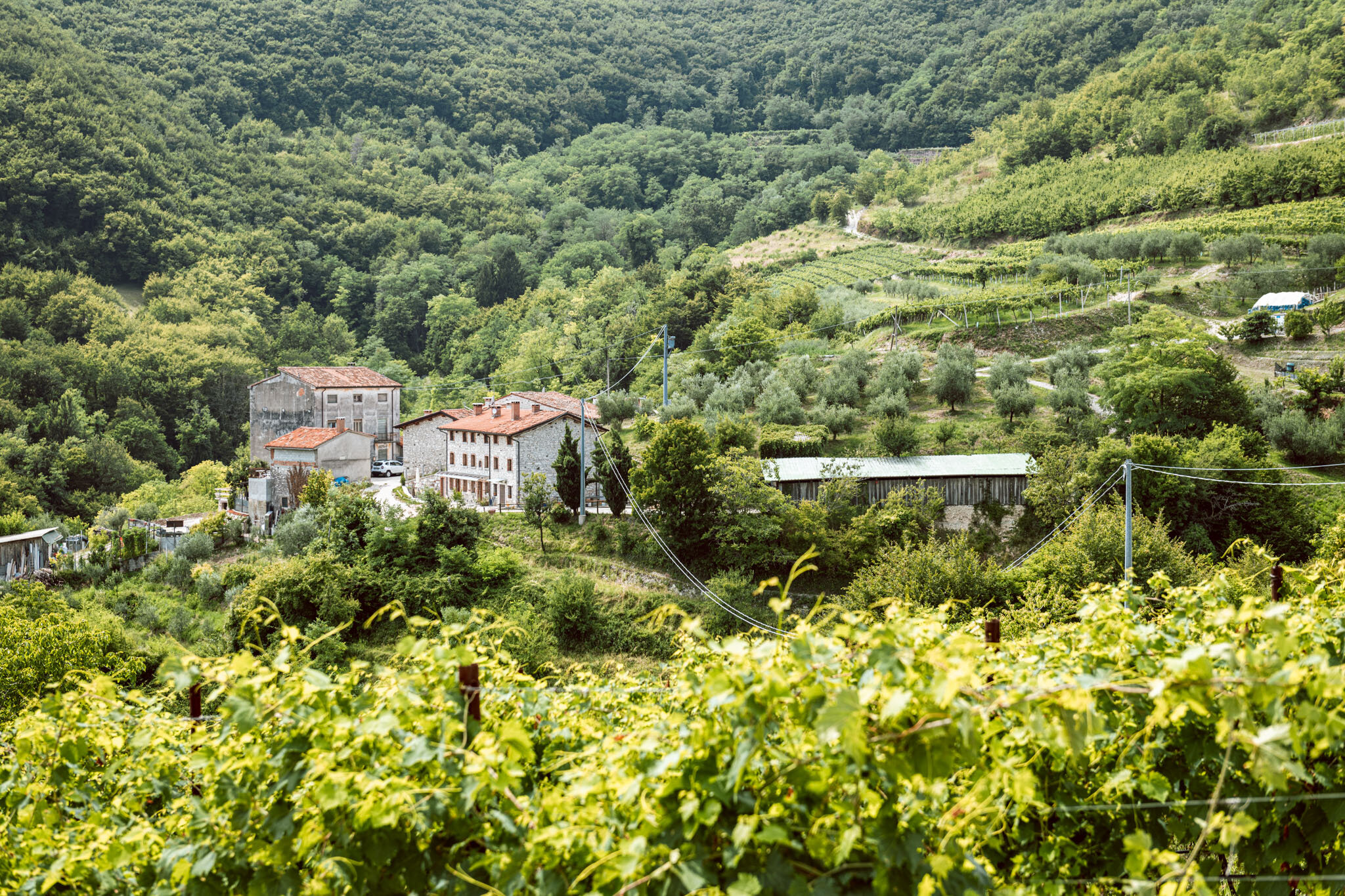
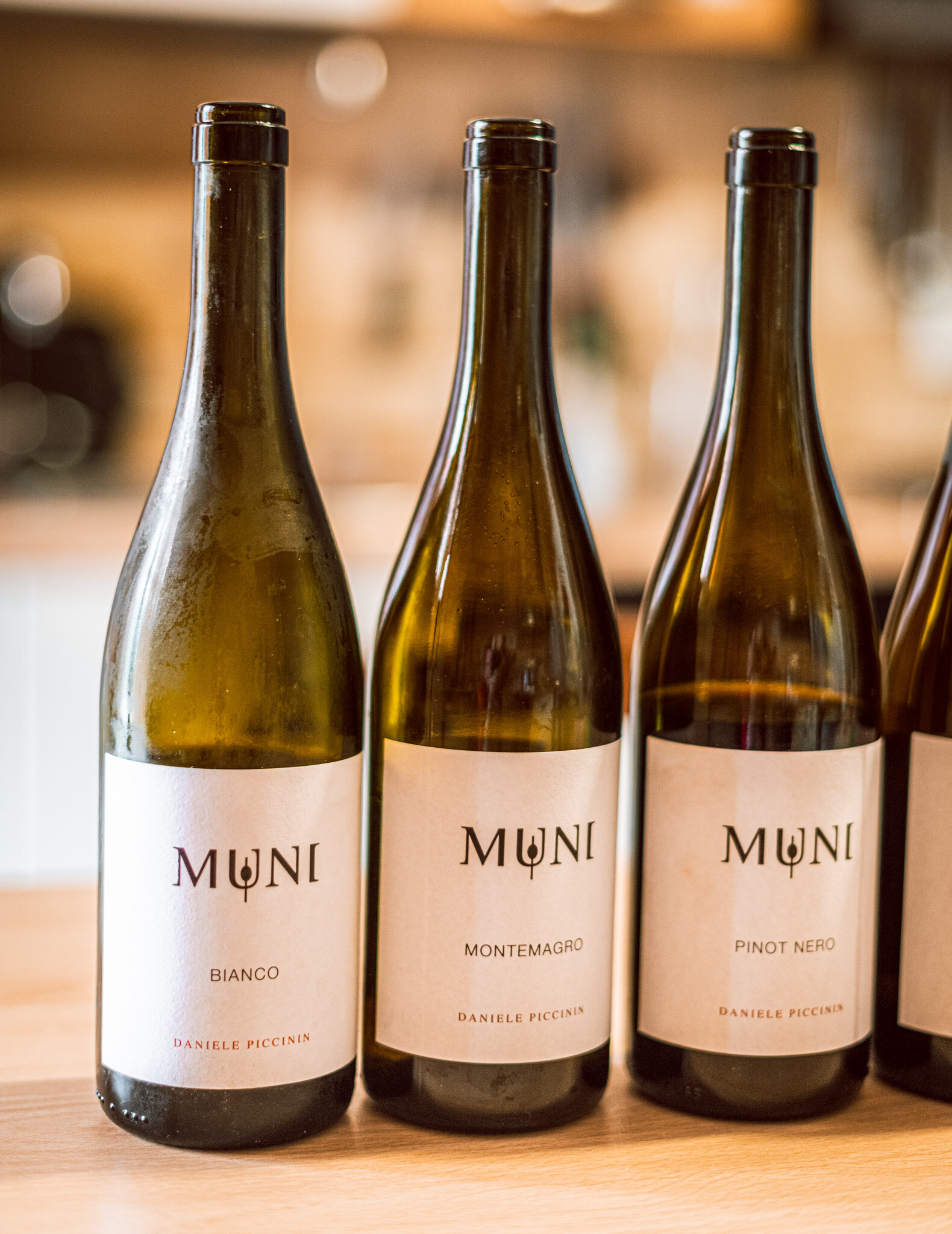
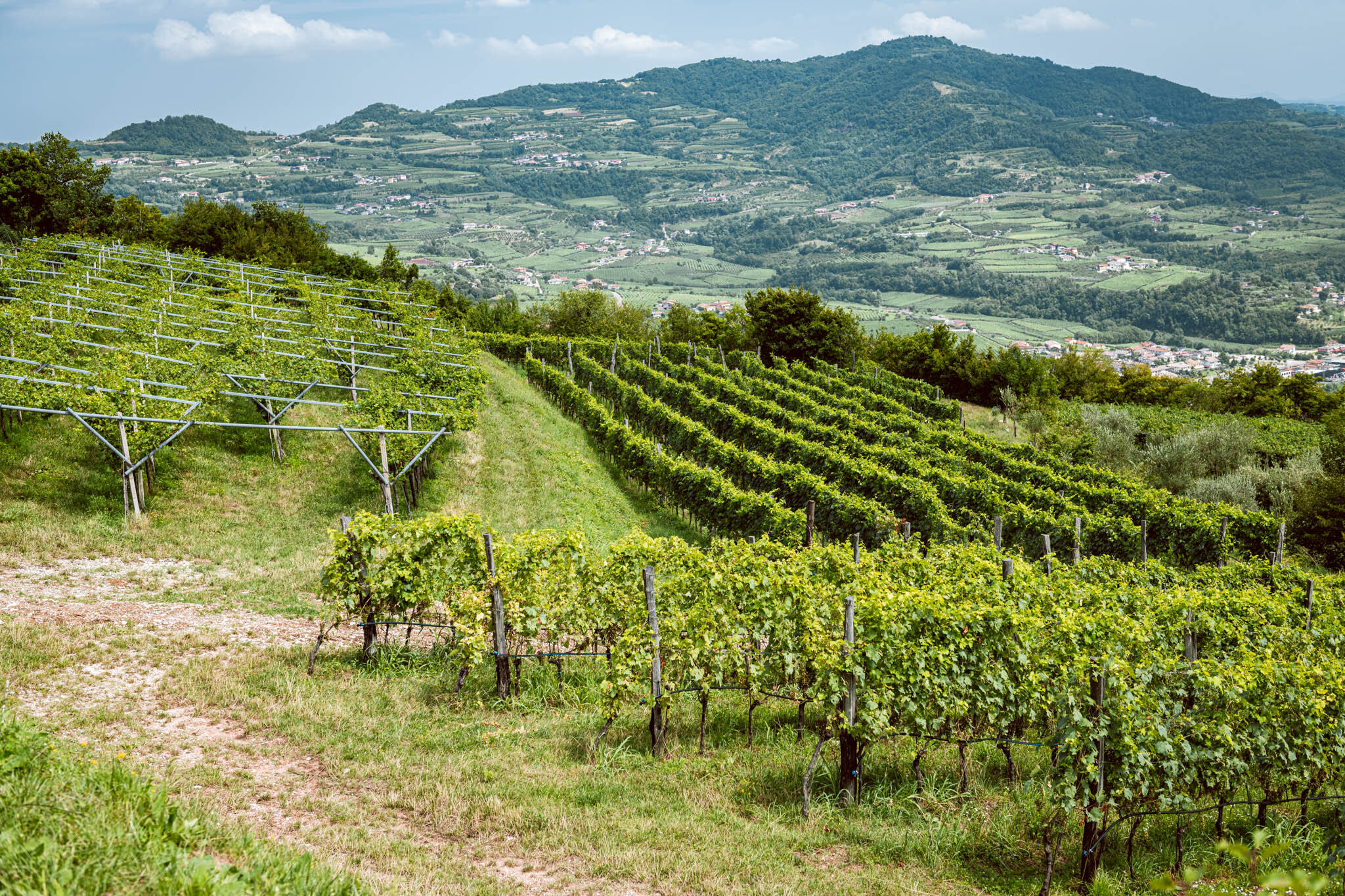
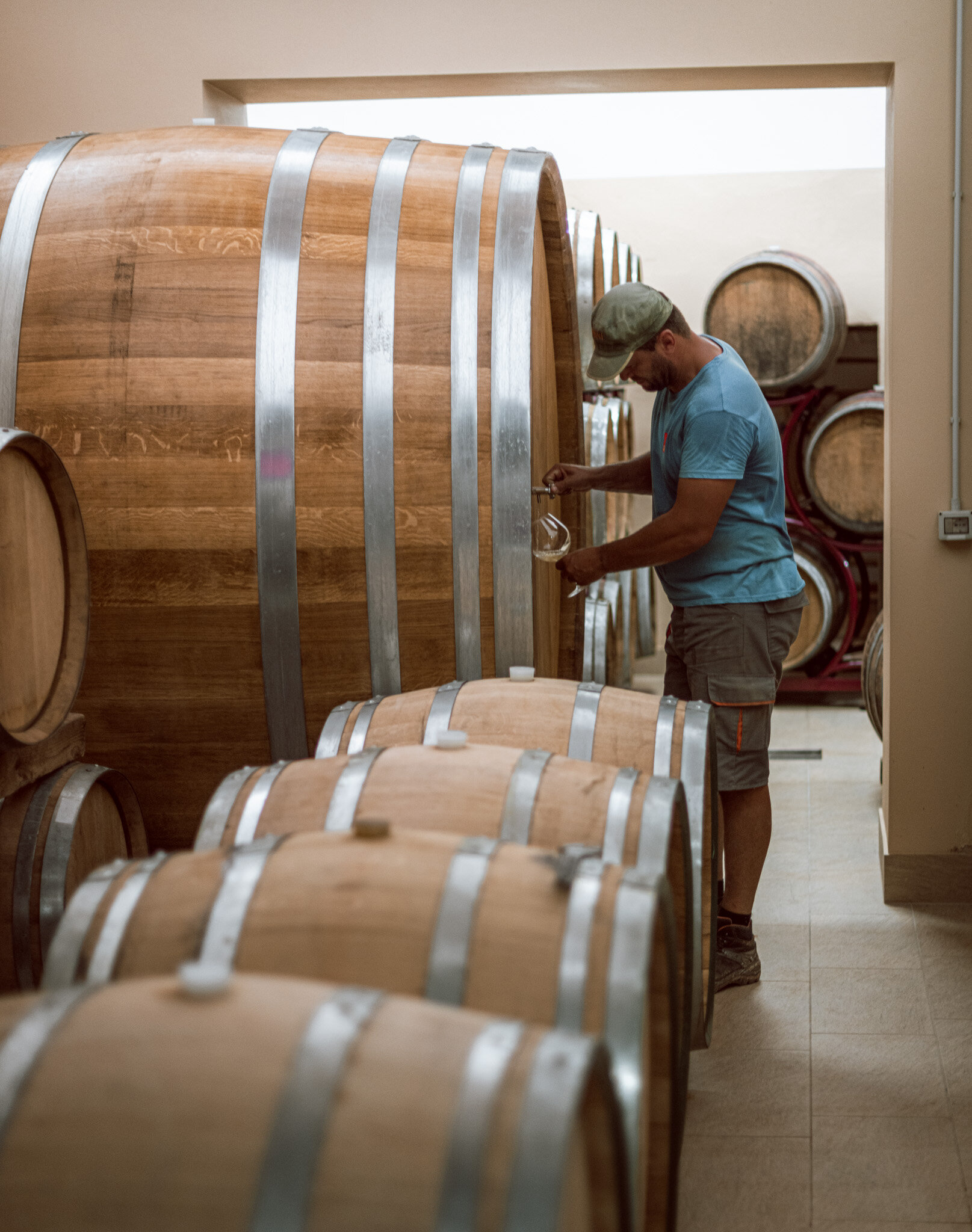
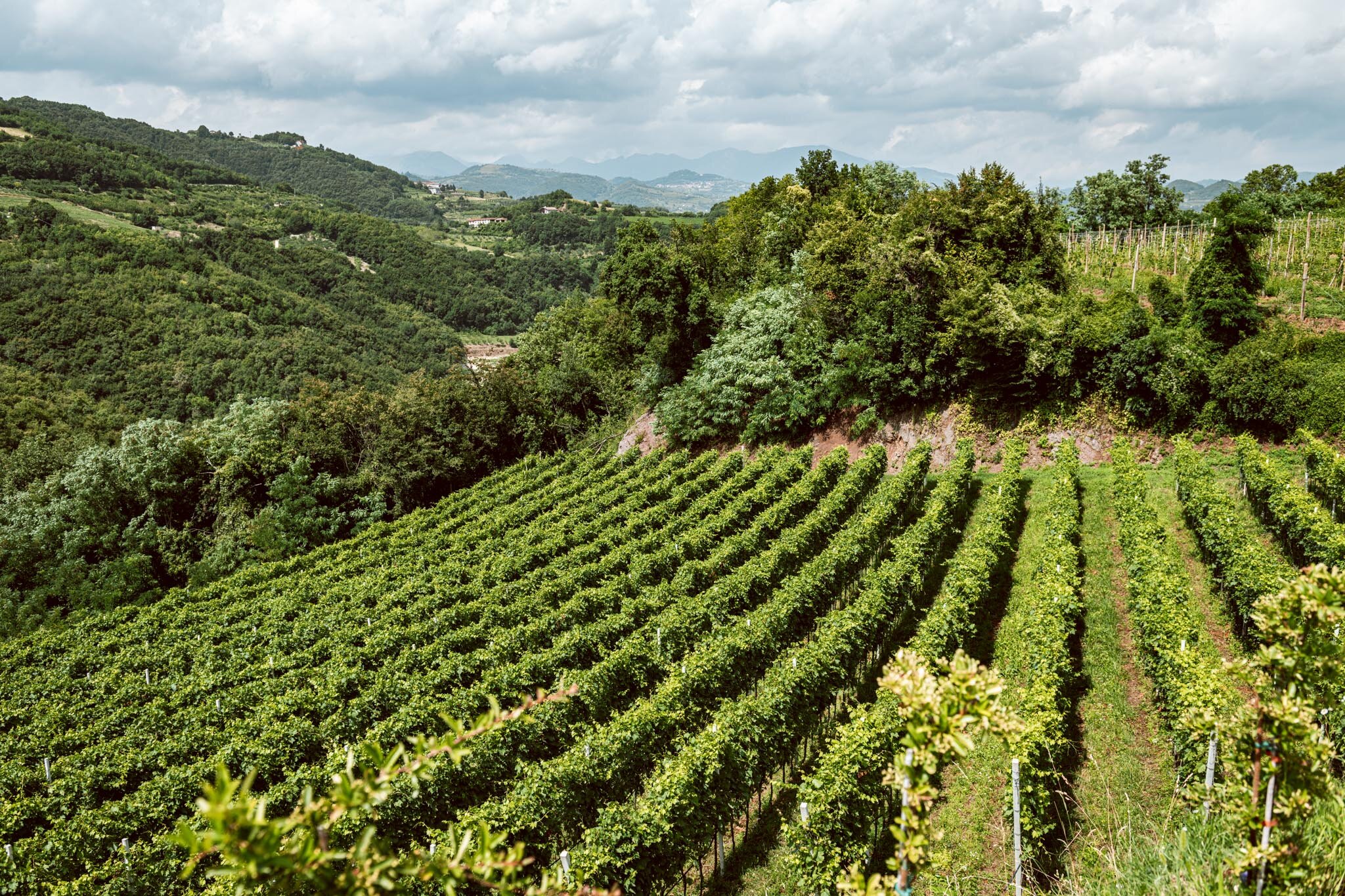
Piccinin
Who: Daniele and Camilla Piccinin
Where: Lessinia, Verona (Veneto, Italy)
What grapes: Durella, Corvina, Molinara, Rondinella, Cabernet, Merlot, Pinot Nero
Key facts: Daniele is a former chef who makes lively, engaging wine using natural methods. This estate specializes in Durella, a very local white grape.
Website: https://danielepiccinin.it/
Instagram: @piccinin.daniele
Piccinin “Epoche” Metodo Classico Brut
Viticulture: natural/organic
Elevation: 300-650m above sea level. Vignale, Galore, Capitelli, La Riva, Cucche, Pollini vineyards
Soil type: Calcareous
Grapes: Durella
Method of fermentation: Picked between Oct. 20th and the beginning of November. Daniele is fermenting 10% of the base for his sparkling wines in wood, for the first time. It’s a big change. He’s planning to slowly get rid of stainless steel. The wine is aged on the lees in bottle for 24 months. He’d prefer longer. Up to six bars of pressure go into this wine. Whole cluster. The yeast is kept in suspension until January. “Towards the end of February we begin to prepare the fermentation pied a cuve with dried grapes. Once ready, we crush all the grapes and estimate the amount of sugars to calculate how much base can be used to make sparkling. We try to mix the base and the must at the same temperature, and then bottle. Subsequently, we take the bottles to a temperate place in order to trigger the fermentation.” Daniele Piccinin.
Piccinin “Larión” bianco Veneto IGT
Viticulture: natural/organic
Elevation: 300+ meters. Cengielle vineyard, the high part of Cengielle vyd, the low section of Pollini and Verzini. Also some second press juice from Galore and the high section of Pollini vyd.
Soil type: Calcareous
Grapes: Chardonnay (85%) Durella (15%)
Method of fermentation: Picked the second and third week of September. The Chardonnay is macerated on the skins, the Durella is direct press, from massale selection vines. Spontaneous fermentation. Daniele does manual punch downs, and remontage in closed tanks. The Durella is aged in wood, the Chardonnay stays in stainless until being bottled in March.
Piccinin Rosé de Noir Pinot Nero
Viticulture: natural/organic
Elevation: 350+ meters above sea level Bogonara, Sotto Cavazza, Cucche, and Pollini vineyards.
Soil type: Calcareous
Grapes: Pinot Noir
Method of fermentation: Gentle pressing. Spontaneous fermentation. Twenty four months on the lees in wooden barrel. Metodo Classico. Unfiltered. No dosage. Daniele started this experiment after his daughter asked why the family didn't make rosé wine. Happily it seems Pinot Noir and Durella are good partners. The Pinot Noir ages in wood, the Durella in stainless steel.
Piccinin “Rosa Per Voi” Rosé
Viticulture: natural/organic
Elevation: 350+ meters above sea level. Bogonara, Sotto Cavazza, Cucche, Pollini vineyards.
Soil type: Calcareous
Grapes: Pinot Noir and Durella
Method of fermentation: The Pinot Noir ages in wood, the Durella in stainless steel. The wine rests on the lees for 24 months. No dosage at disgorgement. This wine is made from the pressed musts that Daniele previously didn’t use: Epoché and Kalipe (metodo classico Pinot Nero) are made solely from free run juice.
Piccinin Muni Pinot Nero
Viticulture: Organic / Biodynamic
Soil type: Calcareous Clay
Elevation: 300m - 500m
Grapes: Pinot Noir
Method of fermentation: Indigenous yeast fermentation in stainless steel then moved to large wooden barrels.
July 26th, 2021
Daniele Piccinin is working in the vineyards when I arrive. His cellar is high above San Giovanni Illiarone, a village to the north of Soave, in the Veneto. The winding, nearly-vertical road from the valley floor to Muni, his birthplace and ancestral farm, says everything you really need to know about the potential quality of Daniele’s wines. It’s steep, and the soil is pure chalky clay. Daniele is soaked in sweat, and after a short excursion through his vines I’m shedding layers and melting in the noon heat. We look at a nearly-buried vinegar/salt bug trap in the middle of a field of Durella. Daniele has these simple devices spread evenly across the farm, to monitor his microcosmos. The university of Modena helps Daniele to analyse the results of the captured insects. Collectively they determine a path to true biodiversity across the farm. Small adjustments are made to keep balance between predators and prey.
If there’s a theme to the work of Daniele Piccinin, it is study, introspection, and course correction. “We learn through mistakes,” he states. The farm he re-started (after selling his restaurant in 2005) has changed paths many times. Daniele sweats the details. He explains which plants between the rows need to be cut, and why. While looking at a white small flower he says, “this is a shit plant, it needs to go now.” Other plants can remain to seed and rejuvenate the soil. A nearby wild carrot is examined, and highlighted as an example of the flora that will aid the vineyard in its path to equilibrium. He cuts grasses under the vines but leaves vegetation long between the rows, for the benefit of local flora and fauna. “If you respect everything (in nature) you can keep something more vibrant,” Piccinin said. His farm looks and feels healthy.
When I met Daniele in 2013 he was making fundamentally different wines. For a few years, while building the first small cellar buildings at Muni, he worked under the tutelage (and under the roof) of Angelino Maule, and the style of wines he crafted at this stage showed heavy influence from his iconic mentor. The wines were compelling but they were not fresh, and this macerated heavy style weighed on Daniele’s conscience. It wasn’t the wine he wanted to make, or drink. So Daniele made changes. He purchased some stainless tanks, started to experiment with destemming and whole berry fermentations (for the start of fermentations, eventually the wines go from steel to wood) and the result was a clarity and vibrancy that was absent from first vintages.
A river separates Daniele’s side of the valley, which used to be a marine estuary and is full of fossils (it’s very young soil, he states) from a more volcanic section of San Giovanni Illiarone, with 100-140 million-year-old soils. The ancestral farm of Daniele’s wife Camilla is on these acidic soils. Happily, we’ll get a little shipment of olive oil grown on century-old trees from Camilla’s ancestral land by autumn. It’s called Gecchele. The whole wide valley contains 3,000 hectares of vineyards in total, 10% of which is Durella. Piccinin’s task as he sees it is to make a quality still wine from Durella worthy of aging. It’s not an easy endeavor.
Piccinin uses richer, more fertile soils for Chardonnay and Pinot Noir. Some of Daniele’s Chardonnay vines are 40 years old. These vines are planted to Guyot trellises. The 65-year-old vines Daniele utilizes are trained to the traditional high Pergola Veronese system. He also planted a new Chardonnay vineyard at 650 meters above sea level: too high for Durella.
The original vines of Muni can be harvested as late as the first week in November. Grapes grown there have thick skins, and high acidity.
Daniele says he’s always changing, because he’s trying to understand what happened as a result of his previous actions. He has changed the way he plants. Now all his new vines are grafted by hand. His intention in vineyard work is to extend the lifespan of his plants, to keep them from degenerating prematurely, and to ward off flavescenca dorada and mal d’esca as much as he can. “It’s about reaching an equilibrium between wild vegetation and grape production. Equilibrium comes from the work you do: adding compost, setting a level of yield.” Balance between forest and field.
Daniele thinks the road forward isn’t determined yet. “It’s important to keep an open mind. “We started too far in one direction, it was a mistake, we learned and changed to a path (maybe) too far the other direction. In the middle is likely to be correct.” He rejects dogma, and embraces failure. As an example, Daniele pushed back against the rote, proscriptive “assistance” of a French biodynamic consultant that visited the farm and suggested treatments in a broad brush manner that (to Daniele) was reminiscent of the old school conventional farming extension agents.
“Biodynamic-strict is the same mindset that conventional growers have. One is suggesting harmless treatments and the other is peddling poison, but both aren’t using their senses. It doesn’t consider that each vineyard is different. ” To Piccinin, a tipping point was the lack of interest in specific vines and terroirs from the Biodynamic consultant. “He never asked me about the roots, whether they were strong or fragile. If roots are strong, you don’t need to feed the plant. Vineyards making 50-60 hl/ha of grapes don’t need ‘food’.” By suggesting the same approach to Daniele for vineyards with different soils, expositions, and stages of maturity, the expert exposed himself as close-minded.
Daniele thinks that today there are 20-25 farmers working in a natural way in his valley. It’s a real shift. When he started with Angelino Maule over a decade ago, the duo were outliers.
I returned to San Giovanni Illarione, to have lunch with Piccinin and his wife Camilla. They live in an apartment with three young daughters, above the apartment of Daniele’s father. All the produce for our tasty midsummer lunch came from their gardens, including the olive oil. Tasting the olive oil made by Daniele’s family and Camilla’s family side-by-side was a revelation. Daniele’s was fantastic with tomatoes and basil, Camilla’s was nuanced and mild, perfect for carne cruda. While watching the duo make carbonara in their small kitchen (using Paolo Petrilli pasta: Daniele is certain it’s the best) evidence of Piccinin’s first life as a chef is apparent. He has a better way to slice their fatty, tender salami, more horizontal as the knife approaches the middle. He has a precise approach to cooking the guanciale for carbonara, in a small high-sided saucepan, at low temperature, in butter. Using this method renders less of the substantial fat of the guanciale, leaving some to savor in the pasta, and keeps the fat that is rendered from being too coarse and rustic in flavor. Anyway, the rendered fat is discarded, or spread on bread “like in the old days,” quips Daniele.
With lunch, we drank some wines.
Fermentation for the 2017 metodo classico sparkling wine is started with dried grape juice from a passito (not with refined sugar, which is common.) It’s very nice, in fact my favorite wine from this cellar. It’s qualitatively up there with the best bubs of northern Italy. Durella is grown on the top of Piccinin’s steep hillside vineyards. About half of Piccinin’s Durella is used for still wine, the rest for sparkling. It’s a grape that keeps its acidity through harvest, making Durella an ideal candidate for bubbly.
The 2020 Muni Bianco is rich and bright. It’s a blend of 70% Chardonnay, 20% Durella, and 10% Pinot Grigio. An exceptional value, often my “sleeper-favorite” white in our warehouse. This is the year to discover it.
The 2018 Pinot Nero is very clean: varietally correct, fresh, and delicate. My personal aversion to Pinot Nero was washed away by the first sip of this utterly charming, fragrant wine.
I know it can’t always be about this, but what lovely people! Passionate about food, articulate, talented, hard-working, intellectually engaged. A real working family farm. I’m 100% committed to showing the world how special Muni and Daniele Piccinin are.



